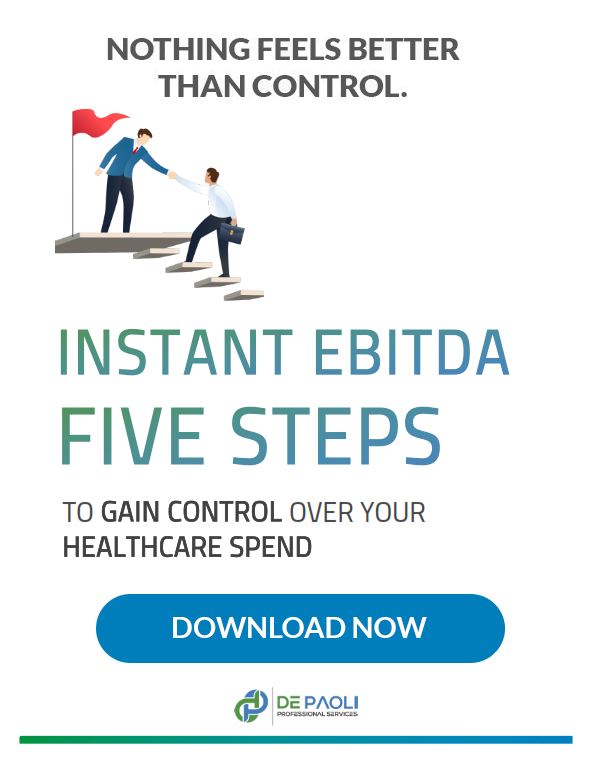Why EBITDA Matters More Than You Think
For most mid-sized businesses, boosting EBITDA isn’t just a nice-to-have—it’s essential. Whether you’re planning for growth, eyeing a sale, or trying to attract investment, your EBITDA plays a central role in how your business is valued. A higher EBITDA generally means stronger profitability, which appeals to investors and brings more flexibility when it comes to scaling your company.
What’s often overlooked is how much your employee benefits strategy can influence EBITDA. Employee benefits are typically among the top five budget line items, yet many companies don’t adjust their benefits programs regularly to align with financial goals. With smart planning and some strategic changes, it’s possible to improve EBITDA through better benefits management—not by cutting corners, but by aligning your offerings with what actually drives value.
Health Insurance Moves That Directly Impact Your Bottom Line
Health insurance can become a runaway cost if it’s not managed actively. Mid-market companies often pay more than they need to simply because their plans haven’t evolved alongside their business. One way to create more financial control is to explore high-deductible health plans. With the right design, these plans lower your premium costs, which creates immediate EBITDA impact without reducing employee value when paired with tools like HSAs.
Beyond traditional insurance models, alternative funding options are gaining ground. Self-funding and level-funding allow your company to keep what you don’t spend on claims, which means every dollar saved goes straight to your cash flow and boosts EBITDA. It’s not about doing more with less—it’s about structuring your benefits plan so that it works with your business cycles and leaves room for growth.
Better Care Navigation Leads to Real Savings
When employees don’t know how to navigate the healthcare system, costs rise—for them and for your company. Care navigation services serve as a guide, helping them choose lower-cost, high-quality care options. This reduces unnecessary procedures and ER visits, which in turn lowers claims volume. When fewer high-cost claims hit your plan, your total spend drops, and those savings show up as improved EBITDA margins.
In addition to care navigation, tapping into data analytics helps uncover exactly where your dollars are going. With the right insights, it’s easier to identify high-cost areas and build proactive plans around them. Whether it’s adjusting coverage or partnering with vendors who have stronger cost control, these decisions all help contain spend and push profit in the right direction.
Linking Employees to Business Growth
Profitability grows when your team performs at a high level, and employees tend to do that when they feel supported and invested in. Training programs that build skills aligned with your business needs lead to better execution every day. It’s not soft benefit spending—it’s a direct investment in stronger margins and fewer errors that could eat into your profit.
Tying rewards to business outcomes adds another layer of accountability. Bonus structures or performance incentives that focus on key metrics such as efficiency, customer satisfaction, or revenue growth align your workforce with executive priorities. As output improves and costs stay controlled, your EBITDA benefits.
Finally, streamlining internal operations takes weight off your team. By automating manual processes or adopting systems that reduce redundancy, your business runs smoother. Less waste, fewer hours lost, and more room for targeted growth all roll up to stronger EBITDA results.
Take a Strategic View of Benefits and Profit
Many companies overlook the impact that a well-managed benefits program can have on profit. Benefits decisions often get made in isolation from financial goals, but when these two areas align, the results are powerful. Whether it’s through adjusting insurance approaches, guiding employees through smart healthcare choices, or investing in the right talent strategies, the path to better EBITDA can start with rethinking how you’re managing your benefits.
A few focused changes can lead to significant returns. And in a mid-market business, where every line item counts, a stronger EBITDA opens doors—to investment, to expansion, and to longer-term success.
Looking to take control of your company’s healthcare strategy?
At Altiqe, we partner with business leaders like you to eliminate wasteful spend, align incentives across providers and advisors, and design benefits that attract and retain top talent—without compromising your bottom line.
Stop managing renewal to renewal—start leading with strategy.




